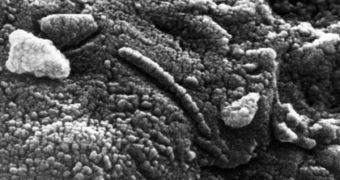Since 2006, the Nullarbor Desert in Western Australia has been the home of an experimental camera setup, designed and constructed by experts at the Imperial College London (ICL), in the UK, the Ondrejov Observatory, in the Czech Republic, and the Western Australian Museum. In a report published in the September 18th issue of the top journal Science, the team managing the telescope announce that they have made the first important discovery, a peculiar, cricket ball-sized meteorite that they recovered from the desert.
Meteorites are very important pieces of evidence in astronomers' efforts of clearing up the mystery surrounding the formation of the solar system. In many instances, the rock fragments were created at the same time the planets were, and have been wondering around the Sun ever since, until they have finally gotten pulled down to Earth by gravity. Those that do not burn completely upon entering the atmosphere hold vital clues to the early chemical composition of the solar system, experts say.
“We are incredibly excited about our new finding. Meteorites are the most analyzed rocks on Earth, but it's really rare for us to be able to tell where they came from. Trying to interpret what happened in the early Solar System without knowing where meteorites are from is like trying to interpret the geology of Britain from random rocks dumped in your back yard,” ICL Department of Earth Science and Engineering Professor Dr. Phil Bland, also the lead author of the Science study, explains.
“We're not the first team to set up a network of cameras to track fireballs, but other teams have encountered problems because meteorites are small rocks and they're hard to find in vegetated areas. Our solution was quite simple – build a fireball network in a place where it's easy to find them. The Nullarbor Desert is ideal because there's very little vegetation and dark rocks show up really easily on the light desert plain,” the expert adds.
The origin of the new meteorite has been tracked back to the asteroid belt, which is an important feat. Unfortunately, such clear conclusions about meteorites are oftentimes impossible to draw, due to the fact that no one knows clearly what trajectory they had when they slammed into Earth. “It was amazing to find a meteorite that we could track back to its origin in the asteroid belt on our first expedition using our small trial network. We're cautiously optimistic that this find could be the first of many and if that happens, each find may give us more clues about how the Solar System began,” Bland concludes.

 14 DAY TRIAL //
14 DAY TRIAL //